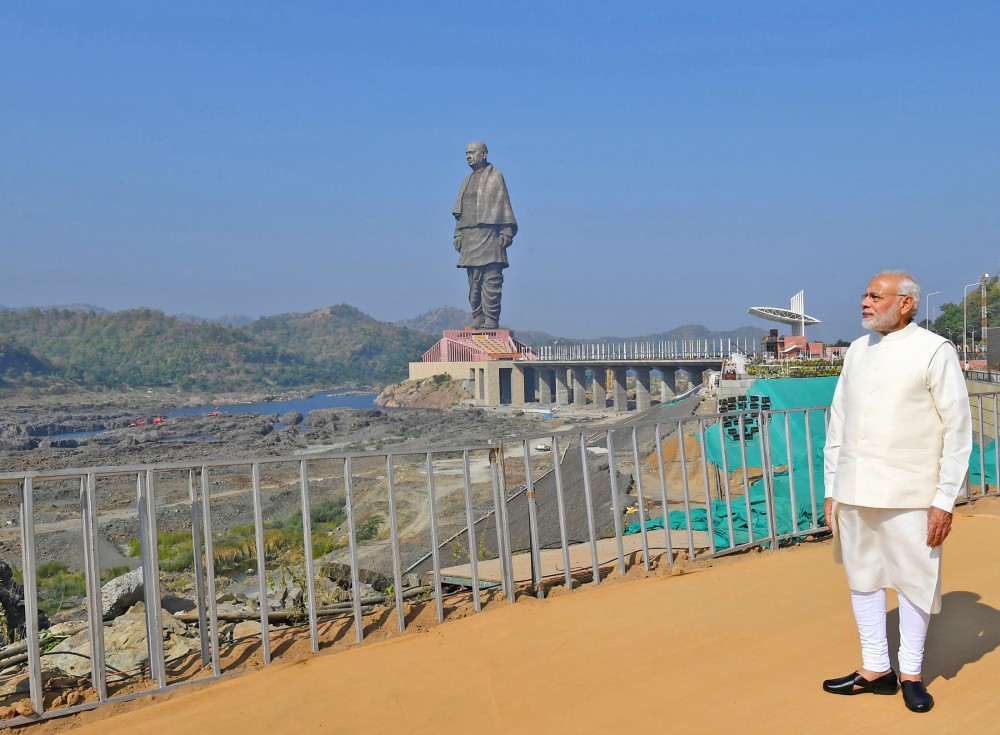India’s Statue of Unity is latest venture of Hindu nationalist leaders
The statue depicts Sardar Patel, an icon of India’s independence—whom the Bharatiya Janata Party has claimed as one of its own.

(The Christian Science Monitor) On his small organic farm in Gujarat, the home state of Indian prime minister Narendra Modi, Lakhanbhai Musafir flings out his arm in disgust in the direction of the Statue of Unity—the tallest statue in the world.
“Modi calls this development,” said Musafir, an advocate for local tribes. “It’s his obsession to make himself immortal, like Emperor Shah Jahan built the Taj Mahal.”
Towering over the Narmada River, the $410 million statue depicts Vallabhbhai Patel, known as Sardar Patel, one of the most important figures in India’s fight for independence from Britain. The bald, stoop-shouldered subject presents an image of humility—though at nearly 600 feet tall and clad in some 1,850 metric tons of bronze it is commanding all the same.





